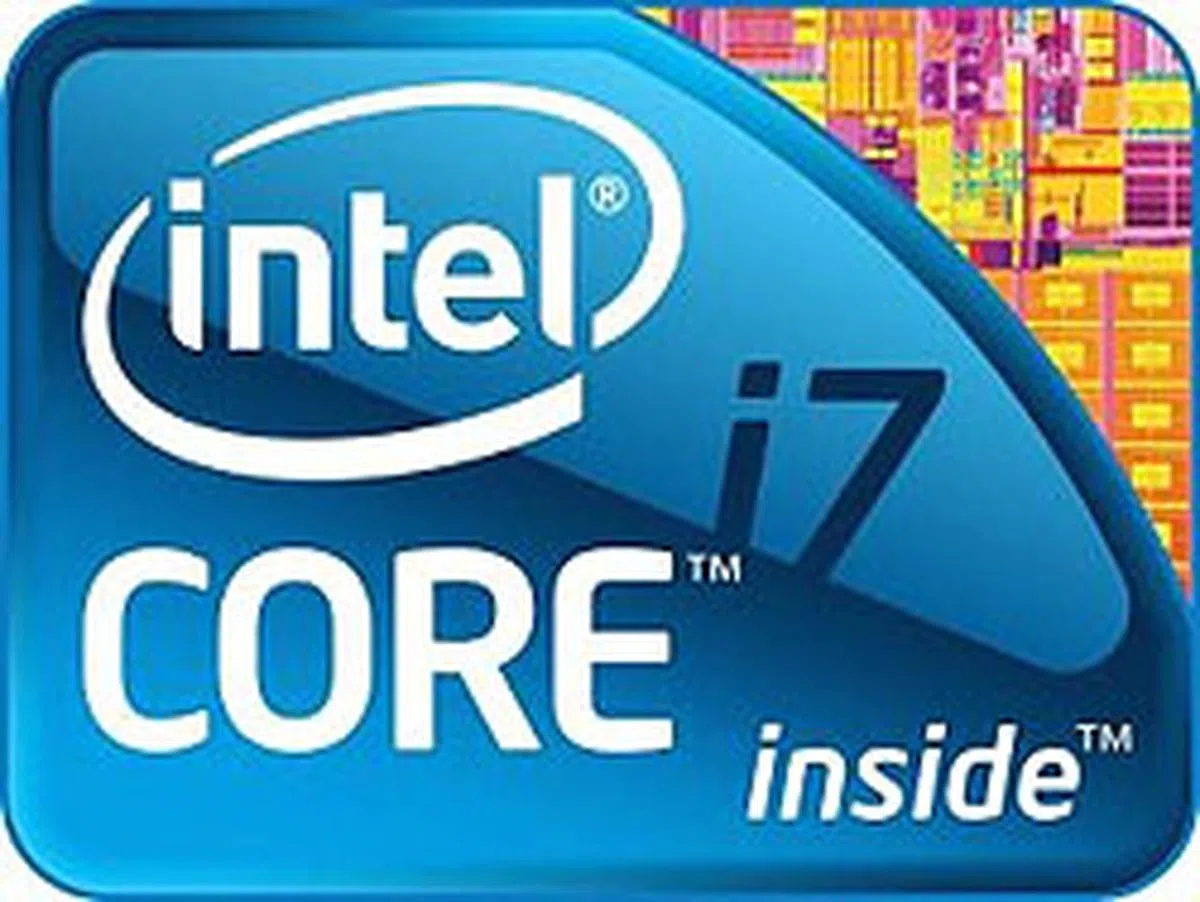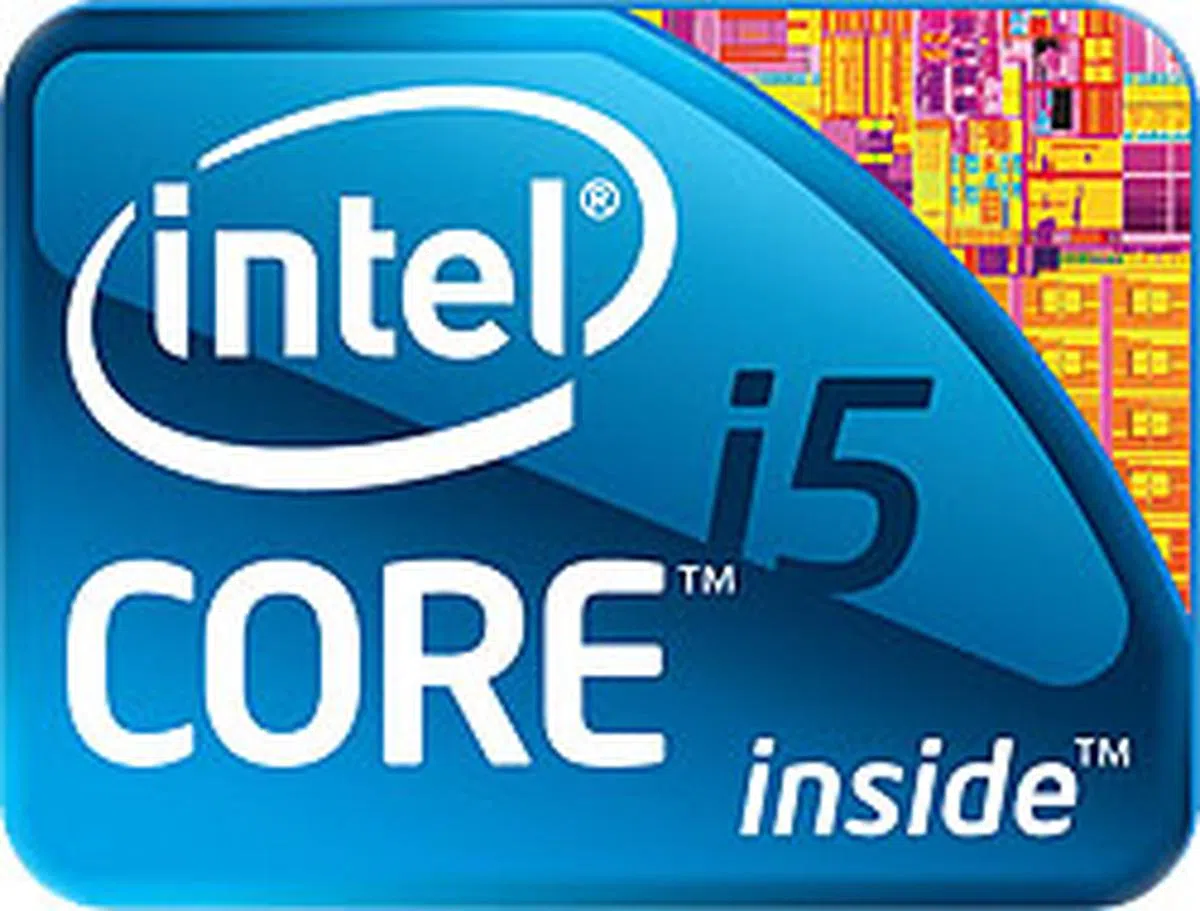Intel Core i7-875K and i5-655K - The Overclocking Club
It has taken a while, but Intel seems to have finally embraced the idea of overclocking. With its latest K-series processors, the Core i7-875K and Core i5-655K, having unlocked multiplier, there's plenty of potential for enthusiasts to ramp up the speed.
Intel's Official Overclocking Club
Intel has never been too receptive to the idea of users overclocking their processors; for the longest time, there have been roadblocks in the reference chipsets or the processors that make overclocking harder than it should. For obvious reasons too, since this practice reduces the need for enthusiasts to get a more expensive, higher-end processor. It didn't stop enthusiasts from trying and succeeding, especially since Intel's processors generally have, depending on the architecture, very decent allowance for overclockers to exploit.
The chip giant has slowly revised its attitude, with Intel first releasing Extreme Edition processors with unlocked multipliers for those who wish to push the boundaries. Unfortunately, these Extreme Edition chips are usually premium models with the highest clock speeds, making them impractical for the budget user hoping to squeeze some extra mileage out of their processors. That's all set to change with the introduction of Intel's latest processors - the Core i7-875K and i5-655K. These 'K' series processors appear to be similar to the other Core i5/i7 processors with one major exception - they have no multiplier lock.
A processor clock speed is determined by the processor multiplier and the base clock of the motherboard. A locked multiplier means that the multiplier has an upper limit, though one can still decrease the multiplier. An overclocker then has to increase the motherboard base clock instead during overclocking, which usually means an increase in other related clock frequencies, like the memory clock. This explains why overclockers tend to go for more expensive, 'overclocking' memory modules that have higher frequencies. In short, overclocking currently is about finding a balance between the base clock and the multiplier such that one gets the highest resultant processor frequency.
A processor with unlocked multipliers therefore allows users to simply increase this number without requiring more costly memory or doing more tweaking. It makes overclocking a much more simple affair. This is the main attraction of these K-series Intel processors and we have no doubt that they will be welcomed in enthusiast circles. But as you'll find in the summarized specs below, there's little difference between it and the regular Core i5/i7. In fact, these two new processors have an 'equivalent' version that do not have unlocked multipliers.
Processor Model
| Clock Speed | Turbo Clock | Cores/Threads | L3 Cache | DMI | Max TDP (W) | Retail Price (US$) | Availability |
Core i7-875K | 2.93GHz | 3.6GHz | 4/8 | 8MB | 2.5GT/s | 95 | ~$330 | Now |
Core i7-870 | 2.93GHz | 3.6GHz | 4/8 | 8MB | 2.5GT/s | 95 | ~$580 | Now |
Core i5-655K | 3.2GHz | 3.46GHz | 2/4 | 4MB | 2.5GT/s | 73 | ~$210 | Now |
Core i5-650 | 3.2GHz | 3.46GHz | 2/4 | 4MB | 2.5GT/s | 73 | ~$180 | Now |
As a sidenote, the Core i5-655K is based on the 32nm Clarkdale architecture, which has an integrated graphics core on the same CPU package. This graphics core runs at the more common 733MHz clock, not the unique 900MHz that's only found on the .
One other difference between these K-series processors and the regular Core i5/i7 is that Intel's own specifications show that they do not have Intel Virtualization Technology for Directed I/O or Intel Trusted Execution Technology. Since these processors are likely to be used by enthusiasts in desktop systems, the lack of these enterprise related features should have no impact, but if you're one of those who require these technologies, it's something to take note.

Despite what CPU-Z thinks, this is the Core i7-875K, though it's a slight distinction at best. With all four cores running, the Turbo Boost tops out at 3.2GHz.

The Core i5-655K.
Test Setup
For this review, we decided on a fresh start, which meant replacing some of the older components in our system configuration. Since the Intel processors are using the Socket LGA1156 package, we went with a MSI P55-GD85 motherboard that has the latest features, like SATA 6Gbps and USB 3.0. The memory and graphics card remained the same, since they are still adequate for our needs. However, our old Seagate Barracuda 7200.10 hard drive has been replaced by a Western Digital Caviar Black 1TB SATA 6Gb/s drive. We also decided that a switch to a modern 64-bit operating system was long overdue, hence the choice of Windows 7 Ultimate (64-bit). Similar tweaks were made to our AMD test system, like the HDD and the OS, as the ASUS Crosshair IV Formula (AMD 890FX) is recent enough to stay.
For our comparisons, we decided that these K-series processors should be compared directly to their non-K versions, so the Core i7-870 is tested with the i7-875K. However, there's no need to duplicate the same for the Core i5-655K, so we threw in processors that are in the similar price range, which include the US$200 Core i5-661 and the Core i5-750. Next, AMD has quite a few choices in price brackets close to the Core i7-875K and i5-655K, so we included them too, like the US$296 Phenom II X6 1090T and the US$200 Phenom II X6 1055 and the US$180 Phenom II X4 965. To recap the prices of the processors we're comparing here:
Estimated Processor Prices in USD (Retail)
- Intel Core i7-875K - $330
- Intel Core i7-870 - $580
- Intel Core i5-655K - $210
- Intel Core i5-661 - $200
- Intel Core i5-750 - $200
- Phenom II X6 1090T - $296
- Phenom II X6 1055T - $200
- Phenom II X4 965 - $180
What's immediately obvious here is that the Core i7-870 looks extremely overpriced compared to the new i7-875K. Given the similarities between the two (except for the virtualization and enterprise bits), there's hardly a reason to get the 870 now when the 875K comes with similar performance and an unlocked multiplier. However, the Core i5-655K looks less of a bargain, with a price premium over the higher clocked Core i5-661, which has a higher clock speed (but no unlocked multiplier). And of course, the AMD contingent looks very price competitive too. It will be interesting to see how the benchmarks turn out.
Intel Core i5/i7 Test Configuration
- Intel Core i5-661, i5-655K, i5-750, i7-870, i7-875K
- MSI P55-GD85 (BIOS 1.37)
- 2 x 1GB Kingston HyperX DDR3-1333 (CAS 7-7-7-20)
- Zotac GeForce GTX 260 O.C (ForceWare 197.45)
- Western Digital Caviar Black 1TB SATA 6Gbps (one single NTFS partition)
- Intel INF 9.1.0.1025
- Microsoft Windows 7 Ultimate (64-bit)
AMD Phenom II X4/X6 Test Configuration
- AMD Phenom II X6 1090T, 1055T and Phenom II X4 965
- ASUS Crosshair IV Formula (AMD 890FX + SB850, 0702 BIOS)
- 2 x 1GB Kingston HyperX DDR3-1333 (7-7-7-20)
- Zotac GeForce GTX 260 O.C (ForceWare 197.45)
- AMD Chipset driver
- Western Digital Caviar Black 1TB SATA 6Gbps (one single NTFS partition)
- Microsoft Windows 7 Ultimate (64-bit)
Benchmarks
With a revamped system configuration, we have also updated some of our benchmarks to reflect this, adding in 64-bit versions when available. We also replaced our aging XMpeg benchmark with Handbrake to test H.264 encoding. The following benchmarks were used in this review:
- SPECCPU 2000 v1.3
- BAPCo SYSmark 2007 Preview (ver 1.05)
- Futuremark PCMark Vantage (ver 1.03.1, 64-bit)
- Lightwave 3D 9.0 (64-bit)
- 3ds Max 8 (SP2)
- Cinebench 11.5 (64-bit)
- Handbrake 0.9.4
- Futuremark 3DMark Vantage (ver 1.03.1)
- Far Cry 2
- Battlefield Bad Company 2
Results - SPECCPU 2000 v1.3
With its slower clock speed, the Core i5-750 was left behind the other Intel processors since its primary positioning is an affordable true quad-core processor and doesn't feature HyperThreading. The Core i7-875K was as expected, roughly equal to that of the Core i7-870 in this benchmark. This was seen in all the scores below, whether it was a 2-threaded or 4-threaded scenario. Of course, the native quad-core processors performed much better in the 4-threaded workload, a gap that even HyperThreading cannot bridge. Meanwhile, the Core i5-661 was only a tad faster than the 655K, thanks to its slight frequency advantage.




Results - SYSmark 2007 Preview
The similar performance in SYSmark 2007 between the 875K and the 870 was expected, while the Core i5-655K, 661 and 750 were all very close overall. The AMD 6-core processors while still behind the Core i7 processors, they were competitive enough with the Core i5 here. Also, video creation was a strong point for the 6-core processors, no doubt due to the greater number of cores.


Results - Futuremark PCMark Vantage
The overall score in PCMark Vantage mirrored what we saw in SYSmark, with the K-series processor, the 875K, performing identical to the regular Core i7-870. With its slightly slower clock, the Core i5-655K was also able to keep up with the Core i5-661, though one has to note that the 661 is less expensive. Again, the Phenom II processors were at best at the level of the Core i5, with the hex-core X6 1055 turning in the lowest score here. Meanwhile, if integrated graphics is not required, the Core i5-750 still looks like a good bargain.



Results - Lightwave 3D 9.0 (64-bit)
There were no surprises in Lightwave 3D, with the Intel Core i7 processors ahead of AMD even in the 8-threaded workload. However the superior number of cores on the AMD processors paid off against the Core i5, which despite HyperThreaded, were generally a tad slower than the Phenom II X6. As usual, the 875K was identical to the 870 while the Core i5-655K was marginally behind the 661.


Cinebench 11.5 (64-bit)
Cinebench 11.5 will naturally favor more processor cores so the native 4 and 6-core processors were at the top. Intel's architecture showed its strength here as the Core i7 remained competitive with the 6-core Phenom II X6. The Core i5-750 also continued to prove its value, as its non-HyperThreaded four cores performed better than the dual-core, HyperThreaded enabled Core i5-655K and 661.

Handbrake (0.9.4)
The results we got for these processors in Handbrake confirmed our findings in Cinebench, with the Phenom II X6 1090T taking a slight lead over the Core i7. The lower clocked 1055 however was just about edged out.

Results - 3ds Max 8 (SP2)
While the Phenom II X6 was strong in Cinebench and Handbrake, 3ds Max 8 was a slightly different story. While the AMD processors were faster than the dual-core processors, the Core i7 was clearly faster here. Even the Core i5-750 posed a stiff competition for the 1090T with a faster render time for one of the tests.


Results - Futuremark 3DMark Vantage
In terms of the overall 3DMark Vantage score, where the graphics card plays a significant role, most of the processors fared very similarly. But when it came down to the CPU score, the number of processing cores became a major factor, which hence saw the Core i5-661 and 655K finishing bottom.


Far Cry 2
The AMD processors were surprisingly strong in Far Cry 2, with the Phenom II X4 965 and the Phenom II X6 processors taking up the top spots, despite having the same GeForce GTX 260 graphics on both platforms. The Intel processors meanwhile all performed very similarly and were ranked a tad behind the AMD processors. We've not seen AMD take a lead in any of our gaming tests such as this in many years indeed.

Battlefield Bad Company 2
Meanwhile, in this benchmark, all the processors seemed to have hit a cap at around slightly more than 80fps. The Core i5-750 and Phenom II X4 965 however were significantly slower, which could be a case of the lower clocks on the 750 and architectural differences for the Phenom II X4 965. More cores however appeared to benefit the Phenom II X6, which was comparable with the Core i7.

Power Consumption
Where the Intel processors stood out was in power consumption, particularly at idle. They were significantly lower than the AMD processors. The differences were narrowed during peak power draw, with the Phenom II X6 doing relatively well for a 6-core processor. However on the whole, if power consumption is your key concern, Intel is your best choice. Also, the K-series processors seem to have similar amount of power draw as their equivalent comparisons, as their specifications would suggest.



Overclocking
Everyone's attention for these K-series processors is obviously on its unlocked multiplier, so for our overclocking segment, we tried to see how far we could push the multiplier. Hence, we left the base clock untouched and just ramped up the multiplier and if needed, the voltages. We also disabled Turbo Boost so that we could get the maximum possible that all the cores could sustain. From the start, it was clear that one could push the multiplier up easily by a decent amount. It also emerged, which is perhaps not too surprising, that the dual-core Core i5-655K had the higher clock frequency at the end.

The maximum overclock (multiplier only) on the Core i5-655K.
For the Core i7-875K, we hit the limits at a multiplier of 32 (4.25GHz), which is 10 steps more than the default 22x (which gives it a base CPU clock of 2.93GHz). For the Core i5-655K, the final multiplier was 34, (culminating at 4.5GHz) compared to its initial 24x multiplier (which gives it a base CPU clock of 3.2GHz). As you can see below, the higher clocks made quite the difference for CPU bound benchmarks like Cinebench and Vantage's CPU score. In Far Cry 2 however, we saw the overclocked Core i5-655K showing a 12% improvement, but there was barely any difference when it came to the Core i7-875K despite its increase in clock frequencies. In any case, for a raw increase in CPU performance for applications like video encoding, the extra and free clock speed will be very useful.
Overall, we were quite pleased with the amount of overclock we managed with air-cooling and a modest increase in voltage. If you're just trying a slight overclock, it's simply a matter of pushing up the multiplier and most users who know how to get into the BIOS should be able to do that. If not, Intel has provided a Windows based Control Center utility to tweak the core clock, voltages, and even the Turbo Boost multiplier limits for different number of cores. Do bear in mind that this amount of overclock may not be achievable with a stock cooler and you'll need an after-market cooler to get the best out of these K-SKU processors.



Conclusion
These K-series processors from Intel represent its first move towards embracing overclocking in the performance and mainstream lineups. On paper, these two new processors are identical to currently available models from Intel, except for a couple of features that are mostly useful in an enterprise environment. It all boils down to the unlocked multipliers on these K-series processors.
And we are glad to report that if Intel intended these processors to be overclocking champions, they are in the right direction, as we found them to be quite easily overclockable, with the dual-core Core i5-655K reaching a maximum of 4.5GHz on air-cooling. It's likely that enthusiasts can achieve such clock speeds without an unlocked multiplier, but that would require a bit more effort than merely incrementing a number in the BIOS. More testing, especially stability tests are needed to find the sweet spot, since users have to juggle between the base clock and multiplier. They would also probably need higher clocked memory modules.
What's significant is that after years of locking down their processors, Intel has finally endorsed overclocking as a valid approach. By choosing to unlock a mainstream Core i5 processor, Intel has given the green light for others in the PC industry. Already, about automatic tools that can detect a K-series processor and automatically overclock it. It's not just for enthusiasts anymore.
These new processors also pose a competitive question to rival AMD. No doubt, AMD has been more willing to allow enthusiasts leeway to tinker with their processors. The smaller company already has a few 'Black Edition' processors that have unlocked multipliers available in various price segments. In this case, the Core i7-875K and its US$330 price tag appears to have the US$290 Phenom II X6 1090T in its sight. The Intel chip still costs more than the X6, but compared to the regular Core i7-870, which seems to be going for US$580 now, it's a huge discount. Effectively, you're only losing some enterprise features going from the 870 to 875K, and you gain an unlocked multiplier in return.
For the typical consumer, it's a great bargain. In fact, the biggest competitor to the i7-875K could come internally, from the Core i7-860, which costs less at US$280, but at a slightly, slower default clock of 2.8GHz. Yet, we're betting that users won't mind paying US$50 for the convenience of having an unlocked multiplier (and the 133MHz clock advantage), whether you're an enthusiast who knows his overclocking or a mainstream user hoping to rely on automatic or Windows-based tools.
It's however less of a bargain for the Core i5-655K, which at US$210, is US$30 more than the regular Core i5-650. That means you're paying U$30 for the multiplier unlock. It looks even less palatable once you realize that the Core i5-661, which not only has a higher integrated graphics core clock, but a slightly higher processor clock, costs US$200. The quad-core Core i5-750, despite having no HyperThreading and a modest clock speed, is also at US$200 and still looks like a steal, especially if you need the cores. Throw in the AMD equation, with the US$180 Phenom II X4 965 'Black Edition' and the 6-core Phenom II X6 1055 at US$200 and this price segment is extremely competitive. With these other alternatives, you get more horsepower that enable you to get more work done faster and still have options to be overclocked, albeit not as aggressively as the Core i5-655K.
Based on what we have seen of the benchmark results, if you take away the power efficiency angle that Intel has an undisputed lead, the performance of these other alternatives to the Core i5-655K are quite often better. Hence, despite the 'K-series tax' of US$30 on the 655K being less than the U$50 on the 875K, we're more inclined to recommend that you skip the 655K, while at the same time if you're looking for a processor in the US$300 range, we would recommend the Core i7-875K. AMD's Phenom II X6 1090T maintains its attractions when it comes to multi-core workloads, but Intel has reacted and the Core i7-875K is definitely a strong contender in this segment.
 |  |
 |  |
Our articles may contain affiliate links. If you buy through these links, we may earn a small commission.